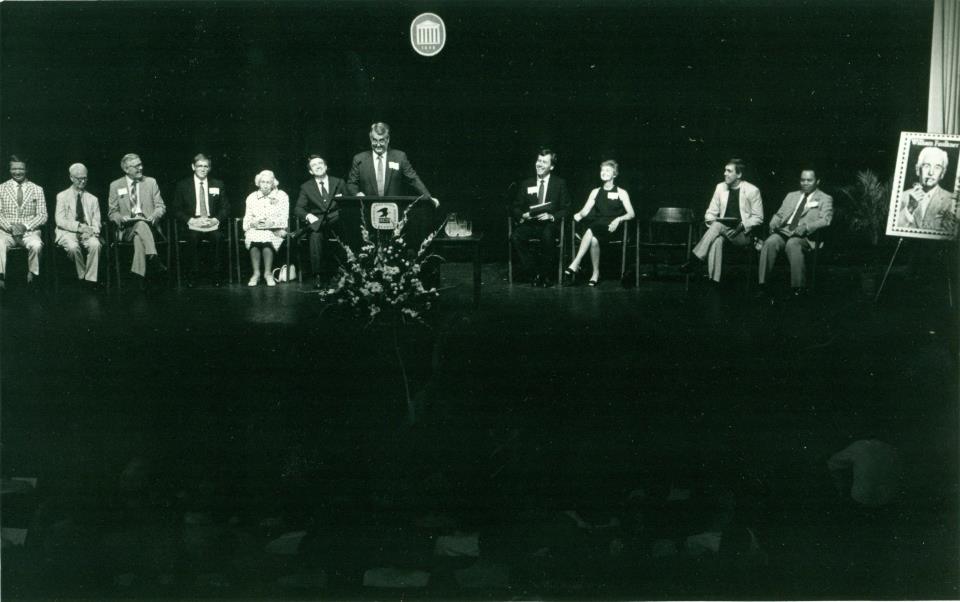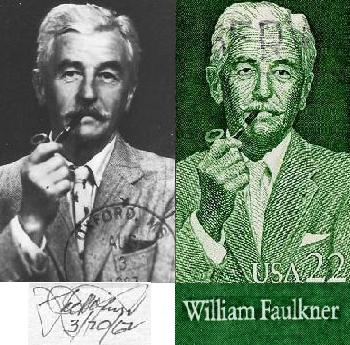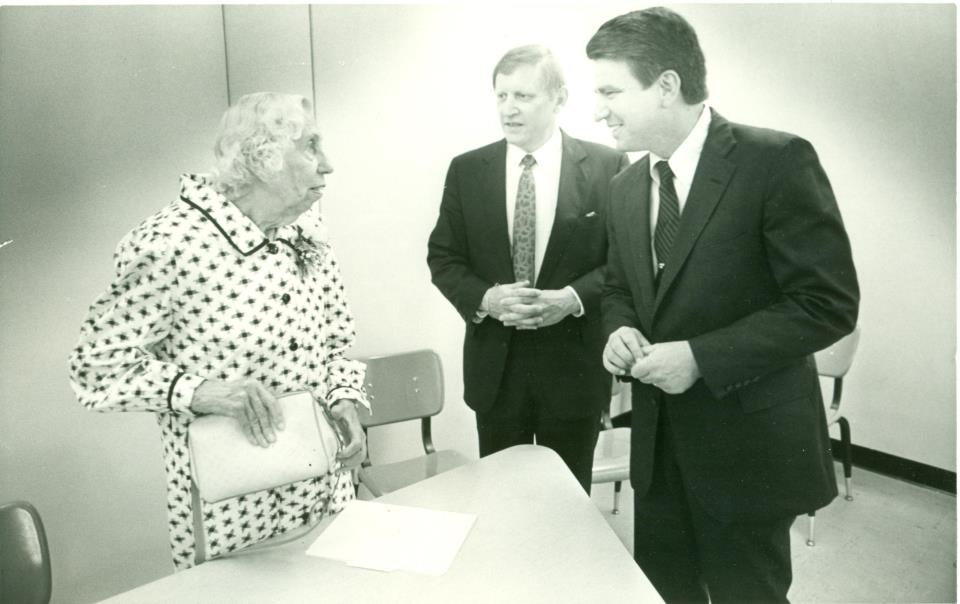
James Hammons, a postmaster in Fayetteville, Arkansas, was the postmaster in Oxford who helped oversee the process for commemorative stamp of William Faulkner.
Hammons was eight years into his Oxonian postmaster career when he helped issue the 22-cent stamp honoring native William Faulkner in 1987. This national event was inspired from a conversation he had with HottyToddy.com publisher Dr. Ed Meek.
Hammons said, “He and I had a conversation and were in agreement that it would be appropriate to recognize the legacy of William Faulkner in the history of Southern culture and his interpretation of it in his writings won him a Nobel Prize for literature.”
Dr. Meek asked him then on the process to get Faulkner, or anyone, recognized on a postage stamp. Hammons then told him about a Stamp Development Board that reviews new submissions of consideration to be recognized on a United States postage stamp. They then began writing letters to the committee.
“I had said that I certainly felt that Faulkner was as noteworthy as Hawthorne or Carl Sandburg and some others recognized in the past,” Hammons said.
The Stamp Development Board concurred in agreement. The Postal Service immediately assigned the stamp to an artist and scheduled the First Day Issue Ceremony for August 3, 1987.

The stamp was then created from a portrait of William Faulkner by Jack Cofield, father of HottyToddy.com contributor John Cofield.
The issuing of a postage stamp in Faulkner’s memory was an amusement to some. A reporter from NPR called Hammons and asked him on live radio what he thought about the irony of postal service recognizing a person who wasn’t happy as a postmaster. Hammons then said, “I think William Faulkner was a better writer than he was a postmaster.”
Hammons remembered the story of Faulkner’s resignation.
As he remembers the story, Faulkner procrastinated on sorting the mail. He chose to attempt writing his novels in the back of the post office most of the days. This lead to a visit from the postal inspector who warned Faulkner to begin sorting or be fired.
Faulkner then said to the inspector, “That’s ok, I am tired of being at the beck and call of every S.O.B. that has enough to buy a postage stamp.” And he walked out.
Faulkner did not leave it at that as he also wrote a resignation letter as quoted:
“As long as I live under the capitalistic system, I expect to have my life influenced by the demands of moneyed people. But I will be damned if I propose to be at the beck and call of every itinerant scoundrel who has two cents to invest in a postage stamp. This, sir, is my resignation.”
That memory isn’t the only Hammons have of Faulkner’s legacy. Hammons lived in the old Colonel Baker place at 917 Old Taylor Road next to Rowan Oak estate.
“My children spent some of their formative years roaming through Bakers Woods, the adjacent property that leads to the university,” said Hammons.
He met Faulkner’s daughter Jill at the press conference and also introduced her at the First Day Issue ceremony. He said it was an honor to meet both her and Eudora Welty at the ceremony.
“She was such an eloquent Southern lady,” said Hammons. “When I was told I would meet her at the press conference and would be introducing her at the stamp ceremony I thought, ‘Now what could I do for the cultural Southern lady?’ So I called a florist and sent over this big pretty white corsage.”

That day was tremendously memorable to James Hammons, and he was happy to have helped ensure William Faulkner’s legacy in Oxford. He may have another story that concerns author John Grisham who was the Cub Scouts’ troop leader in Oxford. Stay tuned!
Callie Daniels is a staff writer for HottyToddy.com. She can be reached at callie.daniels@hottytoddy.com.

